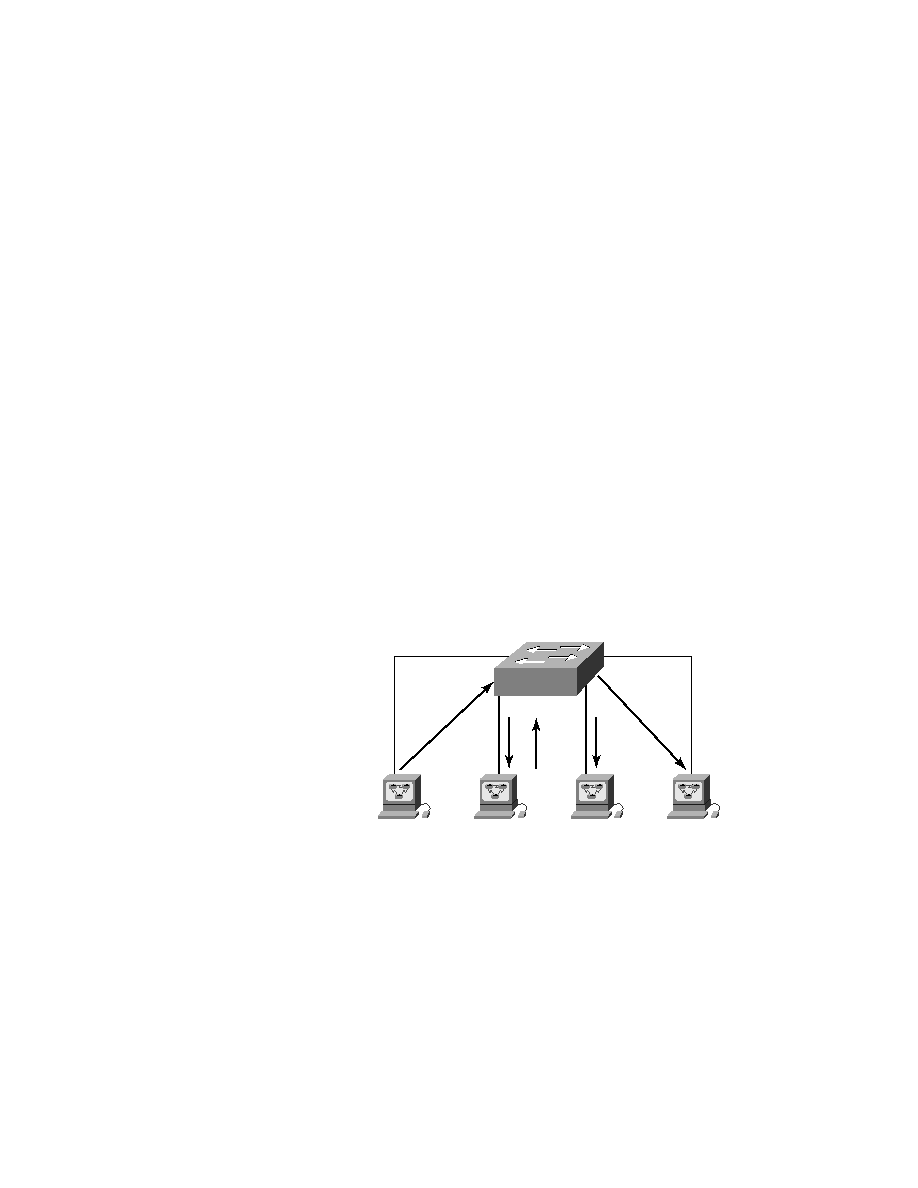
it to remember which interface the sending device is located on. The switch
then has no choice but to flood the network with this frame because it has no
idea where the destination device is actually located.
its database as well, associating this address with the interface that received
the frame. Since the switch now has both of the relevant MAC addresses
in its filtering table, the two devices can now make a point-to-point connec-
tion. The switch doesn't need to broadcast as it did the first time, because
now the frames can and will be forwarded only between the two devices.
This is exactly the thing that makes layer-2 switches better than hubs. In a
hub network, all frames are forwarded out all ports every time--no matter
what! Figure 2.5 shows the processes involved in building a MAC database.
like in Figure 2.4. But when the hosts start communicating, the switch
places the source hardware address of each frame in the table along with
which port the frame's address corresponds.
E0/1: 0000.8c01.000B step 4
E0/2:
E0/3: